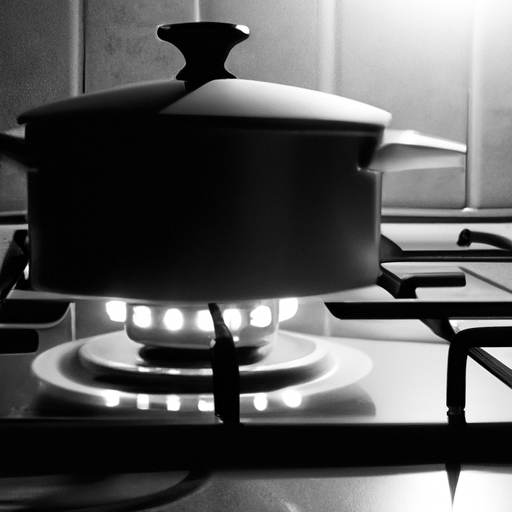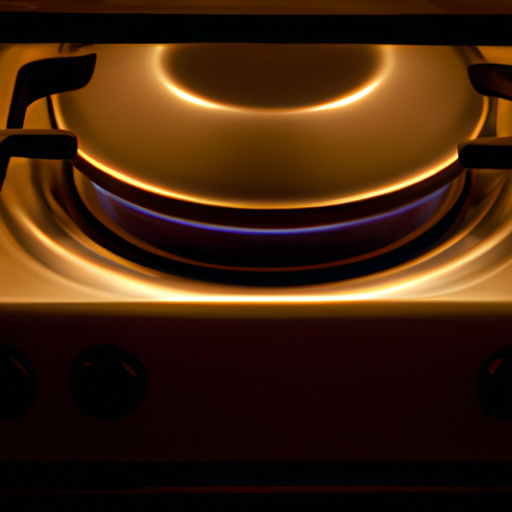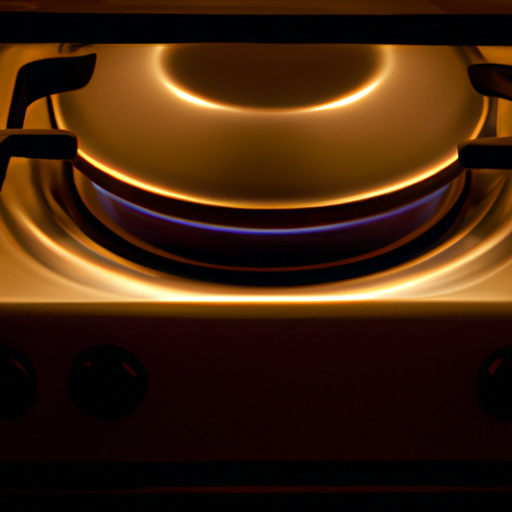Have you ever experienced a power outage while in the middle of cooking? It can be quite frustrating, right? You’re just about to enjoy a delicious meal and suddenly, everything goes dark. No stove, no oven, no microwave. But fear not, because in this article, we’re going to talk about surviving a power outage and the challenges you may face when it comes to cooking.
When the power goes out, it’s like being thrown into the dark ages, especially when it comes to cooking. All of our modern appliances become useless, and suddenly you’re left wondering how on earth you’re going to feed yourself and your family. But don’t worry, there are actually a few ways to keep cooking during a power outage. In this article, we’ll explore some alternative cooking methods and tips to help you navigate through this challenging situation.
One of the key challenges you’ll face during a power outage is finding a way to heat your food without electricity. You may not realize it, but our reliance on electric stoves and ovens has made us forget about other cooking methods. Have you ever heard of a camp stove or a charcoal grill? These are great alternatives that can help you whip up a meal even when the power is out. We’ll dive deeper into these methods and provide you with some useful tips and tricks to make your cooking experience as smooth as possible.
So, be prepared for the worst and equip yourself with the knowledge you need to survive a power outage while cooking. In this article, you’ll learn about the challenges you may encounter and the solutions that can help you overcome them. Whether it’s finding alternative cooking methods or learning how to safely store food during a power outage, we’ve got you covered. Stay tuned to discover the secrets of cooking during a blackout!
Surviving a Power Outage: Cooking Challenges
Preparing for a Power Outage
You never know when a power outage can occur, so it’s essential to be prepared for such situations. One of the most pressing concerns during a power outage is how to cook your food without electricity. Whether it’s due to a severe storm, a natural disaster, or a planned blackout, being equipped with the right knowledge and resources can help you navigate these cooking challenges and ensure you and your family are well-fed during these times of uncertainty.
Stocking Up on Non-Perishable Food
As part of your preparation, it’s crucial to have a stockpile of non-perishable food items. These are items that can be stored for an extended period without the need for refrigeration. Canned goods, such as vegetables, fruits, and proteins like tuna or chicken, are excellent choices. Other options include dry goods like pasta, rice, beans, and crackers. Make sure to check the expiration dates regularly and rotate the stock accordingly to avoid consuming expired products. Additionally, it’s essential to have an ample supply of bottled water for drinking and cooking purposes.
Investing in Alternative Cooking Methods
When the power goes out, having alternative cooking methods can make a big difference. Investing in portable camping stoves or a gas or charcoal grill can provide you with a means to cook your food even without electricity. These cooking methods rely on propane or charcoal, which can be stored safely for a long time. Make sure to stock up on fuel or charcoal as part of your emergency supplies.
Having a Backup Power Source
If you want to maintain some level of electricity during a power outage, having a backup power source like a generator can be an excellent option. However, it’s crucial to ensure the generator is safely installed and operated to avoid any accidents or carbon monoxide poisoning. Ensure you have enough fuel to operate the generator for an extended period, and consider investing in a carbon monoxide detector for added safety.
Immediate Actions during a Power Outage
Assessing the Situation
When the power goes out, it’s essential to assess the situation to determine the extent of the outage. Check if all the electricity in your house is affected or if it’s just a localized issue. This information can help you make informed decisions on what steps to take to deal with the cooking challenges ahead.
Choosing the Right Cooking Method
Once you’ve assessed the situation, you can decide on the cooking method that suits your needs and available resources. If the outage is anticipated to last for an extended period, setting up a gas or charcoal grill in an outdoor space can be an effective solution. However, if the outage is expected to be shorter or you don’t have access to outdoor cooking facilities, using a camping stove or other portable cooking options can be your best bet.
Ensuring Safety Measures
Safety should always be a top priority when cooking without electricity. Ensure that you have a well-ventilated area to avoid the buildup of carbon monoxide from gas-powered cooking devices. Keep children and pets away from any open flames or hot surfaces. Additionally, make sure to have a fire extinguisher nearby and familiarize yourself with its operation. Always practice caution and common sense when dealing with cooking methods that are new to you.

Options for Cooking without Electricity
Using a Gas or Charcoal Grill
A gas or charcoal grill is an excellent option for cooking during a power outage, especially if you have access to outdoor space. Gas grills offer convenience and quick cooking times, while charcoal grills provide a unique smoky flavor to your meals. Make sure to have a supply of propane or charcoal on hand to ensure you can continue cooking throughout the duration of the outage.
Utilizing a Camping Stove
A camping stove is a portable and compact alternative for cooking during a power outage. These stoves are designed to be lightweight and easy to use, making them ideal for emergency situations. They run on small propane canisters and usually have multiple burners, allowing you to cook various dishes simultaneously. Additionally, some camping stoves are equipped with a grill or griddle attachment, expanding your cooking options even further.
Tapping into Solar-Powered Appliances
If you have access to solar-powered appliances, such as solar ovens or solar cookers, you can harness the power of the sun to cook your food. These devices use mirrors or reflective surfaces to concentrate and capture sunlight, converting it into heat for cooking. Though solar-powered appliances may require longer cooking times, they are an eco-friendly and sustainable option, especially in sunny areas.
Creative Cooking Techniques
Utilizing Thermal Cookers
Thermal cookers, also known as wonder bags or vacuum flasks, are ingenious devices that retain heat and allow food to cook slowly over time. These cookers work by bringing a dish to a boil on a heat source like a camping stove, and once boiling, it is transferred into the thermal cooker, which continues to cook the food using the retained heat. The long cooking process ensures that flavors are well-developed, and it can also save on fuel consumption.
Harnessing the Heat of a Wood-Burning Stove
If you have a wood-burning stove or fireplace, you can utilize the residual heat to cook your food. Certain models of wood-burning stoves have cooktop surfaces that allow for direct cooking. Alternatively, you can use cast-iron cookware designed for use on stovetops to prepare meals. Just be sure to check the manufacturer’s instructions to ensure it’s safe to cook on your particular model of stove.
Exploring Dutch Oven Cooking
Dutch ovens are versatile and durable cooking vessels that can be used both indoors and outdoors. They are typically made of cast iron and have thick walls and a heavy lid, which helps to distribute heat evenly and retain it for extended periods. Dutch ovens can be used over an open flame, on a grill, or even in the embers of a campfire, making them an ideal option for cooking during a power outage. From stews and roasts to bread and desserts, the possibilities with a Dutch oven are endless.

Maintaining Food Safety
Minimizing Opening Refrigerators and Freezers
During a power outage, it’s essential to minimize the number of times you open your refrigerator and freezer to keep the cold air inside. Every time you open the doors, cold air escapes, and warm air enters, accelerating the rate at which perishable foods spoil. Consider using a refrigerator or freezer thermometer to monitor the internal temperatures. If the power outage is prolonged, you may need to discard any perishable items that have been above safe temperatures for an extended period.
Using Coolers with Ice Packs
To prolong the cooling of perishable items inside your refrigerator, transfer them to coolers with ice packs. This will help maintain a lower temperature and reduce the risk of spoilage. Place the most perishable items at the bottom of the cooler, closest to the ice packs, and avoid opening the cooler unnecessarily.
Properly Storing Leftovers
If you have leftovers during a power outage, it’s crucial to handle and store them properly to prevent foodborne illnesses. Always place leftover cooked food in shallow containers and refrigerate it within two hours of cooking. If the power is expected to be out for an extended period, consider using alternative methods like canning or dehydrating to preserve your leftovers.
Meal Planning and Preparation
Opting for One-Pot or Sheet Pan Meals
When dealing with limited cooking resources, one-pot or sheet pan meals can be a lifesaver. These meals involve combining all the ingredients into one pot or on a single sheet pan and cooking them together. Not only does it save on dishes, but it also allows flavors to meld together and reduces the need for constant attention while cooking. Explore recipes like chili, stir-fries, or roasted vegetables with protein options like chicken or sausage for a complete and fuss-free meal.
Prepping Ingredients in Advance
Before a power outage occurs, it’s beneficial to pre-prep ingredients to make mealtime hassle-free. Chop vegetables, marinate meat, or partially cook certain dishes ahead of time, ensuring they are stored safely in the refrigerator. This will save you time and effort when it comes to cooking during the outage and allow you to focus on handling the cooking challenges more efficiently.
Exploring No-Cook or Cold Meal Alternatives
When all else fails, consider exploring no-cook or cold meal alternatives. Salads, sandwiches, wraps, and charcuterie boards are excellent options that require minimal or no cooking at all. These meals are not only refreshing but can also be nutritious and delicious. Utilize your canned goods, such as canned meats, vegetables, and fruits, to add variety and flavor to these no-cook meals.
Utilizing Canned and Shelf-Stable Foods
Creating Flavorful Meals with Canned Proteins
Canned proteins, such as tuna, salmon, and chicken, can be incredibly versatile and provide the necessary protein for your meals during a power outage. From salads and sandwiches to pasta dishes and casseroles, these canned proteins can be used in various recipes to create flavorful and satisfying meals. Remember to drain the liquid from the cans before using the protein to avoid excess moisture in your dishes.
Getting Creative with Canned Vegetables
Canned vegetables may not have the same texture and freshness as their fresh counterparts, but they can still be used effectively in a variety of dishes. Add them to soups, stews, chili, or stir-fries for added nutrition and convenience. Rinse the vegetables thoroughly before using to remove any excess sodium or preservatives.
Discovering Versatile Shelf-Stable Ingredients
Shelf-stable ingredients like dried beans, rice, pasta, and grains are pantry essentials that can provide the foundation for many meals during a power outage. They have a long shelf life and can be stored without refrigeration. Use these ingredients as a base for stews, casseroles, or stir-fries, and get creative with spices and canned goods to enhance the flavors.
Water Availability and Purification
Maintaining a Supply of Stored Water
During a power outage, access to clean and safe drinking water may become limited. It’s crucial to maintain a supply of stored water for drinking and cooking purposes. The general recommendation is to store at least one gallon of water per person per day for a minimum of three days. Use food-grade water storage containers and store them in a cool, dark place away from direct sunlight.
Filtering and Purifying Water Sources
If your stored water runs out or you need to utilize other water sources, it’s essential to filter and purify the water before use. Portable water filters or purifiers are readily available and can remove impurities, bacteria, and contaminants from water sources like rivers, lakes, or even tap water. Follow the manufacturer’s instructions to ensure effective filtration and purification.
Boiling Water for Drinking and Cooking
Boiling water is one of the most effective methods for purifying water during a power outage. Heat water until it reaches a rolling boil for at least one minute to kill any bacteria, viruses, or parasites that may be present. Let the water cool before using it for drinking or cooking. If you are unable to boil water, consider utilizing water purification tablets or drops, which are readily available at camping supply stores or online.
Making the Most of Natural Light
Strategically Positioning Cooking Areas
During a power outage, natural light becomes your primary illumination source. When setting up your cooking area, position it near windows or other sources of natural light to maximize visibility. Utilize any available daylight to your advantage, especially during meal preparation and cooking times.
Using Reflective Surfaces for Enhanced Lighting
Reflective surfaces can help enhance the natural light in your cooking area. Hang mirrors or place aluminum foil strategically to reflect sunlight into darker corners. This simple trick can significantly improve visibility and reduce the reliance on artificial light sources.
Exploring Portable Solar-Powered Lights
If the power outage occurs during the evening or in an area with limited natural light, portable solar-powered lights can be invaluable. These lights are typically small, portable, and rechargeable using solar panels. They can provide enough light for cooking and other essential tasks. Consider having a few solar-powered lights on hand for emergencies.
Conclusion
Surviving a power outage doesn’t mean compromising on your ability to cook delicious and nutritious meals. By being prepared, adaptable, and resourceful, you can overcome the cooking challenges that come with a power outage. Stock up on non-perishable food items, invest in alternative cooking methods, and always prioritize safety. Explore different cooking techniques, utilize canned and shelf-stable foods effectively, and embrace the experience of cooking without electricity. With the right mindset and preparation, surviving a power outage can even be an opportunity to learn and discover new cooking techniques. So, stay prepared, stay adaptable, and embrace the challenge of cooking during a power outage.




